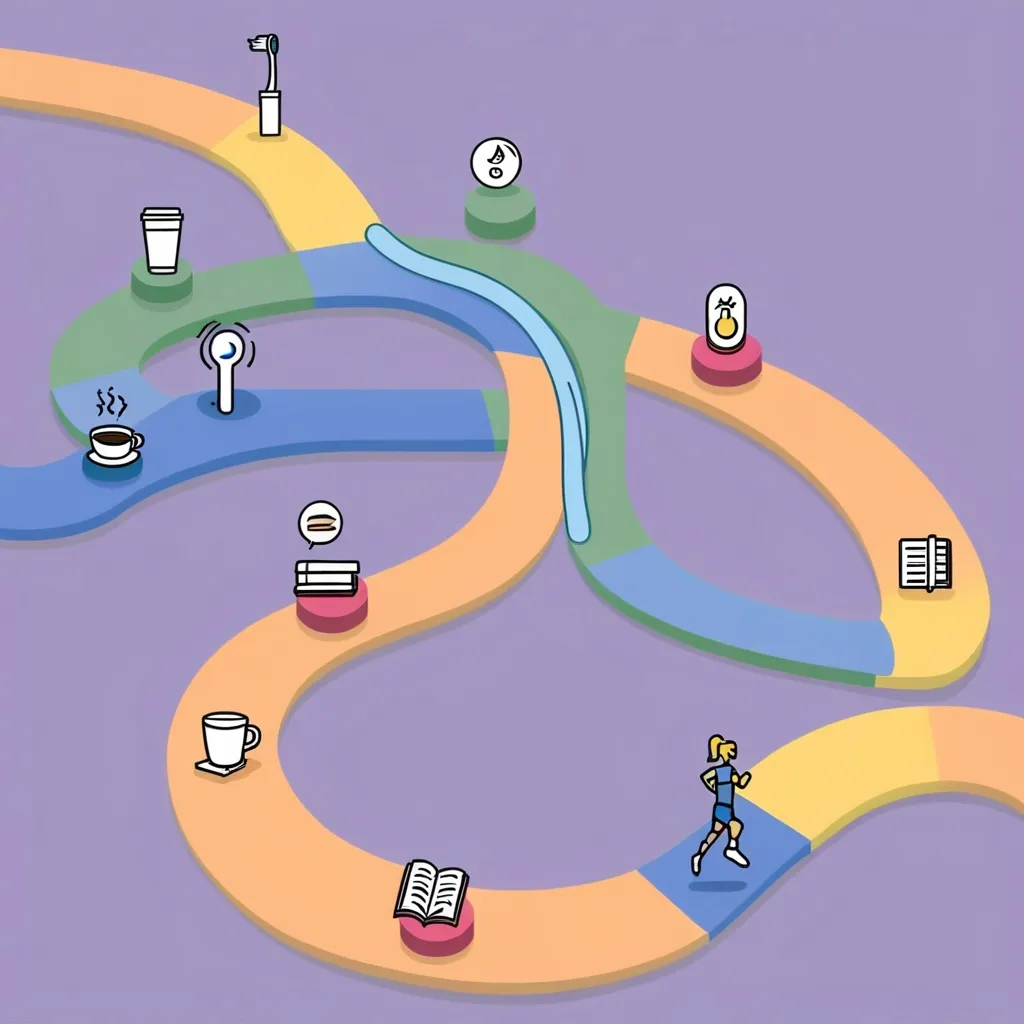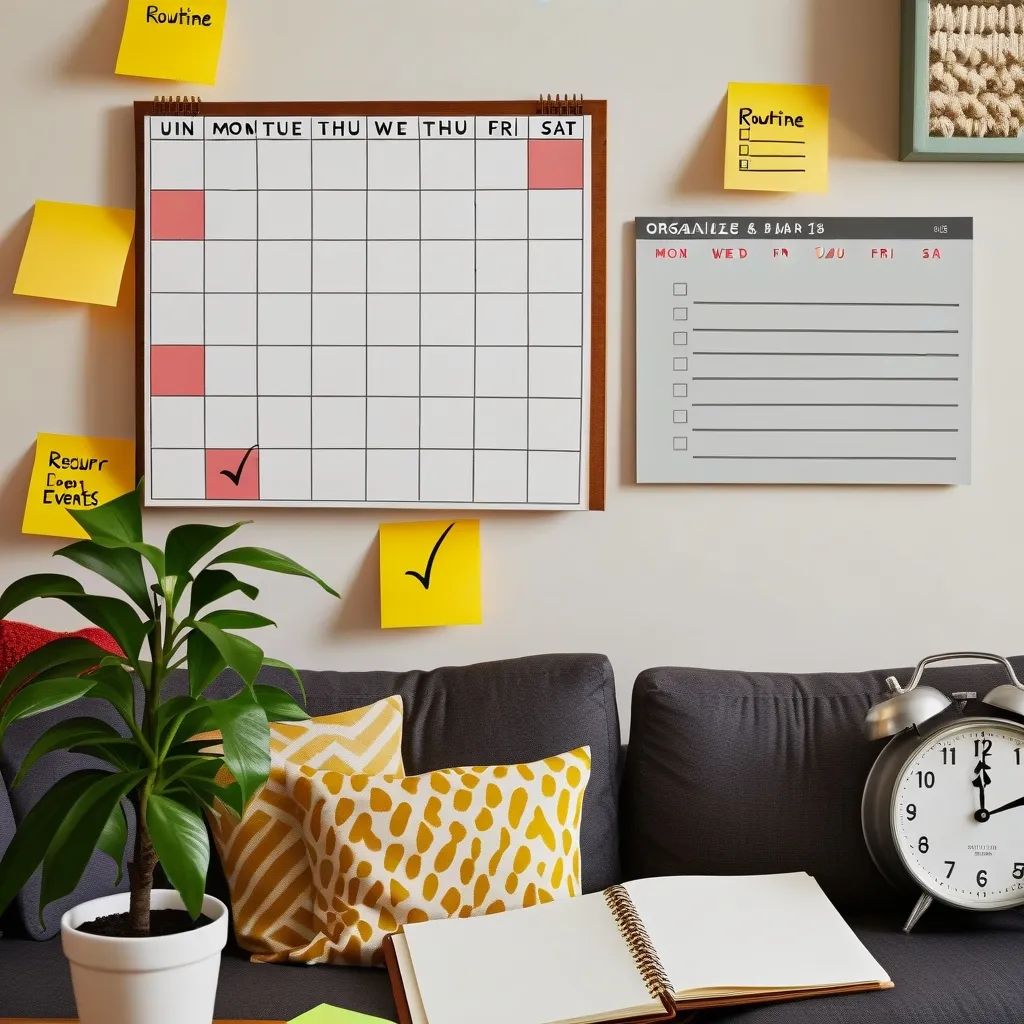Building new habits can be quite the challenge, but there’s a game-changing technique called habit stacking that makes the whole process a breeze. Basically, habit stacking involves linking new habits to your existing everyday routines, leveraging your brain’s natural tendency to turn repeated actions into automatic behaviors. It’s a way to transform your daily life one step at a time.
Habits are like shortcuts our brains create to automate routine tasks. When we consistently perform a specific action within a particular context, our brains start linking that action with the context, turning it into a habit. Think of how you automatically check your phone whenever you sit down for your lunch break. Over time, the act of checking your phone becomes a habit because your brain associates it with the lunch break. Habit stacking taps into this natural mechanism by linking a new habit to something you already do, creating a chain reaction of beneficial behaviors that are easier to adopt and maintain.
To start using habit stacking, you first need to identify the new habits you want to establish. These could be related to health, productivity, or personal growth. Maybe you want to start meditating, journaling, or eating healthier. The key is to start with something specific and actionable.
Begin by examining your existing daily routine and identifying the habits that are already firmly established. These could be as simple as brushing your teeth, having your morning coffee, or checking emails. Make a list of all the habits you do every day without fail. This list is your foundation, the bedrock upon which you’ll build new habits.
Next, take a closer look at your routine to find the best places to insert new habits. Consider the frequency and timing of your existing habits. If you want to adopt a daily habit, it makes sense to link it to something you already do daily. For instance, if you aspire to floss your teeth every day, stack it onto your existing habit of brushing your teeth.
Pair complementary habits to make the transition smoother. If you want to start reading more, link it with an evening ritual like having a cup of tea. This way, the new habit feels like a natural extension of what you’re already doing.
Start small to keep things manageable. This reduces the mental effort required to adopt the new behavior. For example, if you want to start meditating, begin with just one minute a day. This small commitment makes it easier to stick to the habit and eventually increase the duration.
Let’s look at some practical examples to see how habit stacking works in real life. After pouring your cup of coffee each morning, you could meditate for one minute. This stacks the new habit of meditation onto the existing habit of having coffee. Similarly, after taking off your work shoes, you could immediately change into workout clothes. This little trick turns the act of changing clothes into a cue for exercising.
The benefits of habit stacking are numerous. For one, it reduces the effort required to form a new habit since you’re leveraging existing routines. This makes the process less intimidating and easier to manage. It also helps you stay consistent because new habits are anchored to daily rituals you already follow. Plus, as you continue to stack multiple habits, you build momentum over time, making bigger goals seem more achievable.
Another great advantage is the built-in reminder system habit stacking creates. For example, if you stack a new habit onto your morning coffee routine, the act of pouring coffee serves as a cue to perform the new habit. This makes the entire process more seamless and less overwhelming.
Consider a real-life example of someone who wanted to declutter their home but couldn’t get started. They come home, take off their shoes, and plop down on the couch, drained of energy. By using habit stacking, they swapped out their old routine with a new one: not sitting down when they get home, not taking off their shoes just yet, and instead, getting a drink, having a snack, and using the bathroom before starting a cleaning session. They also turned off phone notifications and played some audio entertainment to keep things interesting. The cleaning session was broken down using the Pomodoro method—25 minutes of cleaning followed by a 5-minute break. This structured approach made the task less daunting and led to success.
Habit stacking can also be incredibly beneficial for overcoming challenges related to focus, organization, commitment, and memory recall. For individuals dealing with conditions like autism or ADHD, the predictability found in routines and habits can be calming and essential for productivity. By breaking down large tasks into smaller, manageable chunks, habit stacking makes it easier to stay on track.
To find the right trigger for your habit stack, brainstorm a list of your current habits. Think about things you do each day without fail and events that happen to you daily. These could include getting out of bed, taking a shower, brushing your teeth, getting dressed, brewing a cup of coffee, and eating breakfast. Armed with this list, you can search for the best place to layer your new habit into your lifestyle. Remember, the cue should have the same frequency as your desired habit. If you want the new habit to be a daily activity, make sure it’s stacked onto something you already do every day.
The key to making habits stick is to keep them small and simple. Jumping in too fast can lead to frustration and make you want to quit. Start with a small commitment and gradually increase the duration or intensity as the habit becomes more ingrained. For example, start your new meditation habit with just one minute a day. Place a sticky note on your coffee pot that says “meditate on porch” so that when you go to make your coffee, you’re reminded to meditate. Over time, this small daily block dedicated to the new habit allows it to blossom.
Habit stacking is a fantastic technique for building new habits by leveraging your existing routines. By identifying core habits, analyzing your current routine, pairing complementary habits, and starting small, you can create a chain reaction of positive behaviors that enhance your daily life. Whether you’re looking to boost your health, productivity, or personal growth, habit stacking offers a straightforward yet effective strategy to achieve your goals. Start stacking your way to a better tomorrow!






